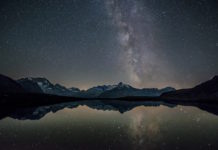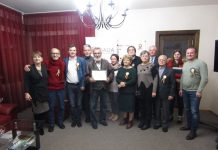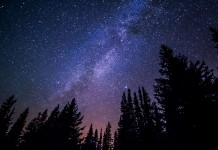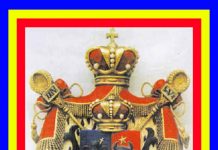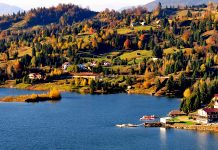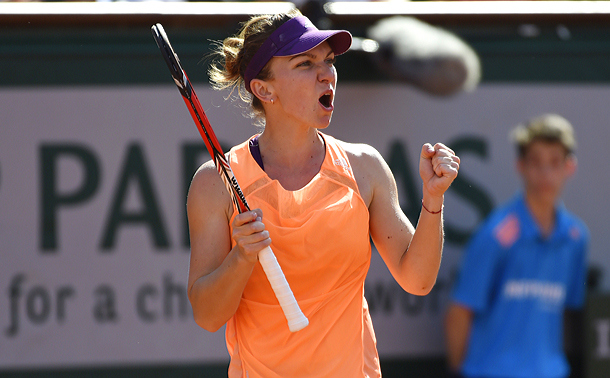(din volumul de reportaje turistice „România, Catedrala din Carpaţi”)
Din Braşov, urmând drumul naţional, paralel cu Oltul, traversezi cochetul oraş Făgăraş cu cetatea sa medievală ce ascunde între zidurile sale o parte din istoria zbuciumată a Transilvaniei. În pelerinajul său spre apus turistul poate face o divagaţie de la traseu spre miazăzi şi un popas la Mănăstirea Sâmbăta de Sus numită şi Mănăstirea Brâncoveanu după numele lui Constantin Brâncoveanu, domn al Ţării Româneşti (1688-1714) cu o contribuţie importantă în dezvoltarea culturală şi spirituală a ţării, ctitor a numeroase lăcaşuri de cult ortodoxe, a cărui arhitectură îi poartă numele, stilul brâncovenesc. După o domnie de 26 de ani a fost trădat şi decaptitat împreună cu cei patru fii, la Constantinopol, de către otomani.
În dreptul localităţii Cârţa, la sensul giratoriu, se ramifică un drum la stânga spre masivul muntos Făgăraş. Şoseaua care traversează masivul muntos Făgăraş numită şi „Transfăgărăşan” a fost realizată pe timpul dictatorului Nicolae Ceauşescu, ca drum strategico-militar dar şi turistic… După câţiva kilometri pătrunzi într-o vale răcoroasă, pe lângă râu, apoi drumul se desfăşoară în serpentine spectaculoase până la Bâlea Cascadă. Aici turistul poate face un popas la restaurant, dar şi o plimbare pe poteca turistică până aproape de cascadă. De undeva de sus, de pe stânci, un puhoi de apă se revărsă în gol, creând în jur o zarvă asurzitoare ce se înălţă către crestele ce plutesc printre norii de ceaţă. Curentul de aer format de deplasarea masei de apă în gol, rostogolirea acesteia pe stânci, precum şi stropii purtaţi de curent, te revigorează cu noi energii. Este un spectacol fascinant oferit de mama natură pe scena munţilor.
Reîntors în mica staţiune turistul poate lua telecabina şi de la înălţime să admire panorama încântătoare care se desfăşoară sub el sau, dacă este cu maşina, să urce pe şoseaua ce şerpuieşte ca o panglică printre pintenii stâncoşi. În stânga se ridică pieptul de piatră al versantului, iar în dreapta se deschide valea parcă fără de sfârşit şi versantul opus, pe alocuri plutind în ceaţă. Spectacolul văii frapează prin priveliştea ce încântă privirile care alunecă pe fiecare colţ de stâncă ce răsare printre brazi sau împunge cu aplomb oceanul albastru al cerului.
În regatul munţilor te apropii din ce în ce mai mult de sufletul naturii şi spiritul pietrei milenare, fascinat în aceeaşi măsură de multitudinea de imagini care de multe ori par rupte dintr-un vis. Pereţi abrupţi deschid drum spre abis, prăpăstii în diferite forme care mai de care mai ameţitoare, forme în continuă transformare odată cu scurgerea timpului, variind de la un anotimp la altul atât prin costumul de gală alb, verde sau cenuşiu al masivului, cât şi prin multitudinea nuanţelor de albastru din infinitul cerului.
La Bâlea Lac privirile îţi sunt delectate de peisajul de un pitoresc aparte, dar şi de apa străvezie a lacului din vârful muntelui. Turişti de toate naţiile fac fotografii, filmează, admiră hăul ce se deschide pe partea nordică cu şerpuirea şoselei printre stânci şi palele de ceaţă ce se caţără pe abrupţi ca nişte adevăraţi alpinişti. Pe partea de răsărit lacul este străjuit de crestele sterpe ale masivului muntos. Aici este un hotel, dar şi un restaurant mai aparte care pătrunde în apele lacului ca o lacustră. Prin apele limpezi cu nuanţe verzui se zbenguie păstrăvul indigen.
Aici, la hotarul dintre crestele dominante ale munţilor şi albastrul infinit al cerului, adesea vremea devine capricioasă şi rafalele vântului, vuietul său, urletul văii, ecoul tunetelor, fulgerele ce se preling ca nişte şerpi luminoşi pe stânci, nori fioroşi ce revarsă ploi torenţiale vara sau viscole năprasnice iarna, descriu tablouri de la incantaţie la groază. Alteori când cerul este senin, astrul zilei pare mai aproape de frunţile de piatră ale masivului. În ultimii ani se obişnuieşte ca aici, la Bâlea Lac, odată cu sosirea anotimpului alb, să fie construite un Hotel de Gheaţă şi o biserică din blocuri de gheaţă din lacul Bâlea…
De la Bâlea Lac se trece din Ardeal, pe sub muchia muntelui printr-un tunel, în partea cealaltă către Argeş. Şi aici eşti întâmpinat de vârfurile pleşuve şi conturul dantelat al crestelor. Masivul Făgăraş este cel mai mare din ţară şi cu vârfurile cele mai înalte, Moldoveanu (2544 m) şi Negoiu (2535 m), dominând ţinuturile dintre cele două principate, Transilvania şi vechiul regat, Ţara Românească. În depărtare piscurile munţilor se înalţă deasupra norilor. Nori albi sau cenuşi, perdele de ceaţă printre care se observă bălticele albastre ale bolţii cereşti, fascicolul de raze ale astrului zilei ce penetrează prin perdeaua norilor, toate acestea creează imagini feerice în împărăţia Făgăraşilor. Aici, sus, la un pas de cer totul este complex, un conglomerat de nori, ceaţă, stânci, arbuşti şi cer, creează prin neuniformitatea lor o imagine plină de armonie.
La coborâre eşti întâmpinat de cascade al căror tumult se propagă în unde sonore către creste, în timp ce şuvoiul de apă se loveşte de pintenii stâncoşi. Părăsind înălţimile sterpe pătrunzi în cheile Argeşului cu splendorile lor. Şoseaua se prelinge pe lângă abruptul stâncos, de partea cealaltă deschizându-se valea adâncă.
Vârfurile semeţe ale Făgăraşului rămân undeva sus, iar maşina pătrunde în pădurea de brad pe conturul lacului de acumulare. După mulţi kilometri ajungi la barajul Vidraru, una dintre măreţile realizări ale regimului comunist de pe vremea lui Ceauşescu. De pe coronamentul barajului în arc, cu o înălţime ameţitoare, undeva în adâncuri se vede fundul văii ca un firicel ce şerpuieşte printre versanţii abrupţi. Te minunezi de ceea ce vezi şi te întrebi nedumerit: „Cum or fi stat oamenii să lucreze la asemenea înălţime?” De la asemenea distanţă îi vezi ca pe nişte furnici. Dar astfel de baraje sunt multe în ţară şi sunt construite în vremea numită pe atunci „Epoca de Aur”, dar pe care cei de azi o numesc a „odiosului”. Şi totuşi regimul de tristă amintire ne-a lăsat şi lucruri cu care să ne mândrim.
Mai jos, pe versantul stâng pe direcţia de coborâre, se vede Cetatea Poenari, cea care a constituit o a doua reşedinţă a domnitorului Vlad Ţepeş, cunoscut în mitologie ca Dracula. Curtea Domnească de la Târgovişte (cetatea) a constituit reşedinţa mai multor domnitori din Ţara Românească printre care Mircea cel Bătrân şi Vlad Ţepeş.
După câţiva kilometri de la ieşirea din spectaculosul defileu al râului Argeş ajungi la cochetul orăşel Curtea de Argeş, unde se află mănăstirea cu cea mai frumoasă biserică prin stil şi arhitectură ridicată de Meşterul Manole, care, aşa cum spune legenda, pe vremea lui Negru Vodă ce zideau ziua se dărâma noaptea. Se zice că meşterul şi-a zidit soţia, pe Ana, şi a reuşit să construiască biserica. La final le-au luat schelele şi muncitorii împreună cu meşterul lor şi-au făcu aripi din şindrila de pe acoperiş şi au zburat. Din locul unde a căzut Manole a ţâşnit un izvor… În biserică se află racla cu moaştele Sfintei Filofteea la care zilnic vin mii de credincioşi să se roage pentru sănătate şi mântuire de păcate.
De aici pelerinajul nostru se îndreaptă către mirificele ţinuturi vâlcene…
***
Ion NĂLBITORU
(Translated by Lia NENCIU)
THE TRANSFĂGĂRĂŞAN NATIONAL ROAD AND ITS SPLENDOURS
(from the book ”Romania, Cathedral of the Carpathians”)
Starting from Brasov and following the highway alongside the river Olt, then crossing the chic city of Făgăraş with its fortress, you get to a roundabout near the locality Cârţa, where you can take to the left road if you want to go to the mountains´ range. On his pilgrimage to the West, the tourist can turn away from the route, taking to the South, towards Sambata Monastery (NA “sambata” means “Saturday”), also called Brâncoveanu Monastery – after the Wallach voivode, Constantin Brâncoveanu (1688-1714), who had an important contribution to the cultural and spiritual development of Wallachia (Ţara Românescă), founder of numerous orthodox worship places (churches and monasteries), whose architecture is known also after his name, Brancoven style. After a reign of 26 years, this Wallach Prince was betrayed by some of his court, and so, both him and his four sons were beheaded by the ottoman sultan in Constantinople.
The road that crosses the Făgăraş Massif, also called ”Transfăgărăşan”, and also built during Ceauşescu regime, was meant to be not only a strategic and military way, but a also a touristic one. After a few kilometers away only, you come in a cool valley along the river, and then the road lays forward in spectacular serpentines to Bâlea Waterfall. Here the tourist can make a stop at the restaurant, or take a ride on the tourist trail until near the waterfall.
A flood of water flows into the void from somewhere above the cliffs, creating deafening tumult around, which rises to the peaks that seem to float among misty clouds. Both the air stream formed by the body of water rolling down the cliffs and the drifting drops refresh you with invigorating energy. It is a fascinating spectacle offered by Mother Nature on the mountains´ stage. Back to the little resort, if you take the cable car, you will be mesmerized by the lovely panorama running beneath, or, if you travel by car, you can drive up the road that winds like a ribbon through the rocky spurs, having the haughty stone chest of the slope on the left, while on the right, both an endless valley is opening, and the opposite slope that seems to float in the mist from place to place. The striking view of the valley delights the eyes of the tourist, which glide on every crag that emerge through the trees stinging bravely the blue ocean of the sky. Here, in the reign of the mountain, you protrude the nature´s soul and the spirit of the millennial stone, equally fascinated by the multitude of magical images as beautiful as a summer dream. Steep walls open the way to the abyss, precipices of different shapes, one more dizzying than another, with forms continuously changing with the passage of time, ranging from one season to another both the elegant white, green or gray costume of the mountain, and the myriad shades of the blue infinite sky.
At Bâlea Lac, your eyes will enjoy both the unique picturesque landscape and the transparent water of the lake situated on the top of the mountain. Tourists from all nations take photographs, videos; admire the gulf that opens on the north side with the road crawling like a snake through the rocks, and the fog that climbs the steep like experienced alpinists. The lake is surrounded on the east side by the barren ridges of the mountain range. There are a hotel and a restaurant rather special here, which enters the lake waters as a lacustrine building. Indigenous trout frolic in the clear water with greenish hues. Here, on the border between dominant mountainous ridges and the infinite blue sky, the weather often becomes whimsical and the gusts of wind, the noise of this roaring valley, the echoing thunder, the lightning which trickle like luminous serpents on the rocks, fierce clouds that pour torrential rain in summer or sudden winter blizzards, all of them depict paintings that pass you from horror to enchanting, just in front of your eyes. Sometimes, when the sky is clear, the sun seems to approach the stone foreheads of the massive closer and closer. In recent years, once the white season is settled here, at Bâlea Lac, it has got customary to be constructed an Ice Hotel and a Church made of Bâlea Lake ice blocks.
From Bâlea Lake you can cross the mountain from Ardeal (Transilvania), passing by the edge of the mountain through a tunnel, to the other side, to the county of Arges. If you do so, you are met by the bald peaks and the embroidered contour of the Carpathian crests. With its highest peaks: Moldoveanu (2544 m) (and Negoiu (2535 m), which dominate both Transilvania and The Old Kingdom (also called Walachia or Ţara Romaneasca), the Făgăraş Massif is the biggest in the country. The peaks of this range of mountains, which raise their majesty over the clouds, are going to accompany you, watching over your tour from faraway. A fairy-tell land of white and gray clouds, dropping their misty curtains over your steps, but letting little blue spots of the sky to caress your sight by sending you magical sun rays, all of these and much more is the Kingdom of Făgăraş Mountains. Here up, at just a step to the sky, everything is complex, a conglomerate of clouds, mist, rocks, small trees and sky, creating by their lack of uniformity a harmonious view.
Tumultuous waterfalls, whose clamor is propagated in hectic waves to the crests, wait for your descending at the foot of the mountain, to enchant your eyes with their water streams hitting the rocky spurs. So, once you leave the barren heights, you protrude the beauty of the Keys of Arges. Here the road glides along the rocky steep, while a deep valley widens down on the other side. The haughty peaks of Făgăraş remain somewhere above, once the car enters the fir-tree forest bordering a magnificent accumulation lake, so, after enough driving, you reach Vidraru Barrage, one of the greatest achievements of the Ceauşescu communist regime. The bottom of the valley comes out like a little stream finding its way through the mountains, if you dare to have a look from the top of this barrage, in the form of a bow and with a breathtaking height. You will enjoy every single moment and wonder how people could work at such a dizzying height. Men look like ants looked down from such a height. But there are so many other barrages of this sort in Romania, built during the euphemistically called “The Golden Age”, which people today consider and name “The Age of the Hideous One” (referring to Ceauşescu, the communist dictator). In the meantime, driving down along the left slope, you get to the Fortress of Poenary that served as a second residence city to Vlad the Impaler (Ţepeş) – well-known in mythology as Dracula.
The Royal Court in Targoviste (the fortress) was the residence city for many other Wallach Voivodes, Mircea the Old and his nephew, Vlad the Impaler (previously mentioned as Dracula). After a couple of kilometers away, once you get out of the magnificent Arges Canyon and reach the attractive city Curtea de Argeş, you have the unique opportunity to visit the monastery with the most beautiful church in Romania, built during the reign of Negru Voda (Black Voivode) by the legendary Master Manole, who, according to the legend, had to build his own wife, Ana, in order to give the building eternal endurance, as he had dreamt one night, to prevent that everything his team was builing during the day to get destroyed during the night, as it had been happening for a while. The legend says that after he had put his wife into the wall, the church ceased to collapse and remained steady. But, when the architectural masterpiece was finished, the Voivode ordered that their scaffold should be destroyed, and Manole remained on the top with his team. He and his workers made shingle wings and jumped. The place where Manole had fallen, a beautiful refreshing stream sprang, as a reward of his honesty and faithfulness, while on the place the workers had fallen, only thorns sprang, because they had worn their families not to visit them. A fountain is arranged on the place of the spring, called Manole Fountain. Inside the monastery, there are the relics of Saint Filofteia, to which hundreds of people come daily to pray for health, help, or to find salvation.
From now on, our journey heads to Vâlcea, my homeland, but this is another story.
—————————-
Ion NĂLBITORU
Brezoi, Vâlcea
mai 2017


